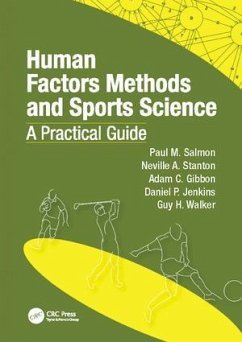During the course of any sporting event, critical cognitive and physical tasks are performed within a dynamic, complex, collaborative system comprising multiple humans and artifacts, under pressurized, complex, and rapidly changing conditions. Highly skilled, well-trained individuals walk a fine line between task success and failure, with only slightly inadequate task execution leading to the latter. Promoting cross-disciplinary interaction between the human factors and sports science disciplines, Human Factors Methods and Sports Science: A Practical Guide provides practical guidance on a range of methods for describing, representing, and evaluating human, team, and system performance in sports domains. Traditionally, the application of human factors and ergonomics methods in sports has focused on the biomechanical, physiological, environmental, and equipment-related aspects of sports performance. However, various human factors methods, applied historically in the complex safety critical domains, are suited to describing and understanding sports performance. This book delineates the similarities in the concepts requiring investigation within sports and the more typical human factors domains. The book's focus on cognitive and social human factors methods rather than mainly on the application of physiological ergonomics approaches sets it apart from other books in either field. It covers eight categories of human factor methods: data collection, task analysis, cognitive task analysis, human error identification, situation awareness measurement, workload measurement, team performance assessment, and interface evaluation methods. Constructed so that each chapter can be read non-linearly and independently from one another, the book provides an introduction and overview to each Human Factors topic area, and of each method discussed, along with practical guidance on how to apply them. It also includes detailed descriptions of the different methods, example applications, and theoretical rationale. This allows the concepts to be easily found and digested, and the appropriate method to be easily selected and applied.
Hinweis: Dieser Artikel kann nur an eine deutsche Lieferadresse ausgeliefert werden.
Hinweis: Dieser Artikel kann nur an eine deutsche Lieferadresse ausgeliefert werden.








